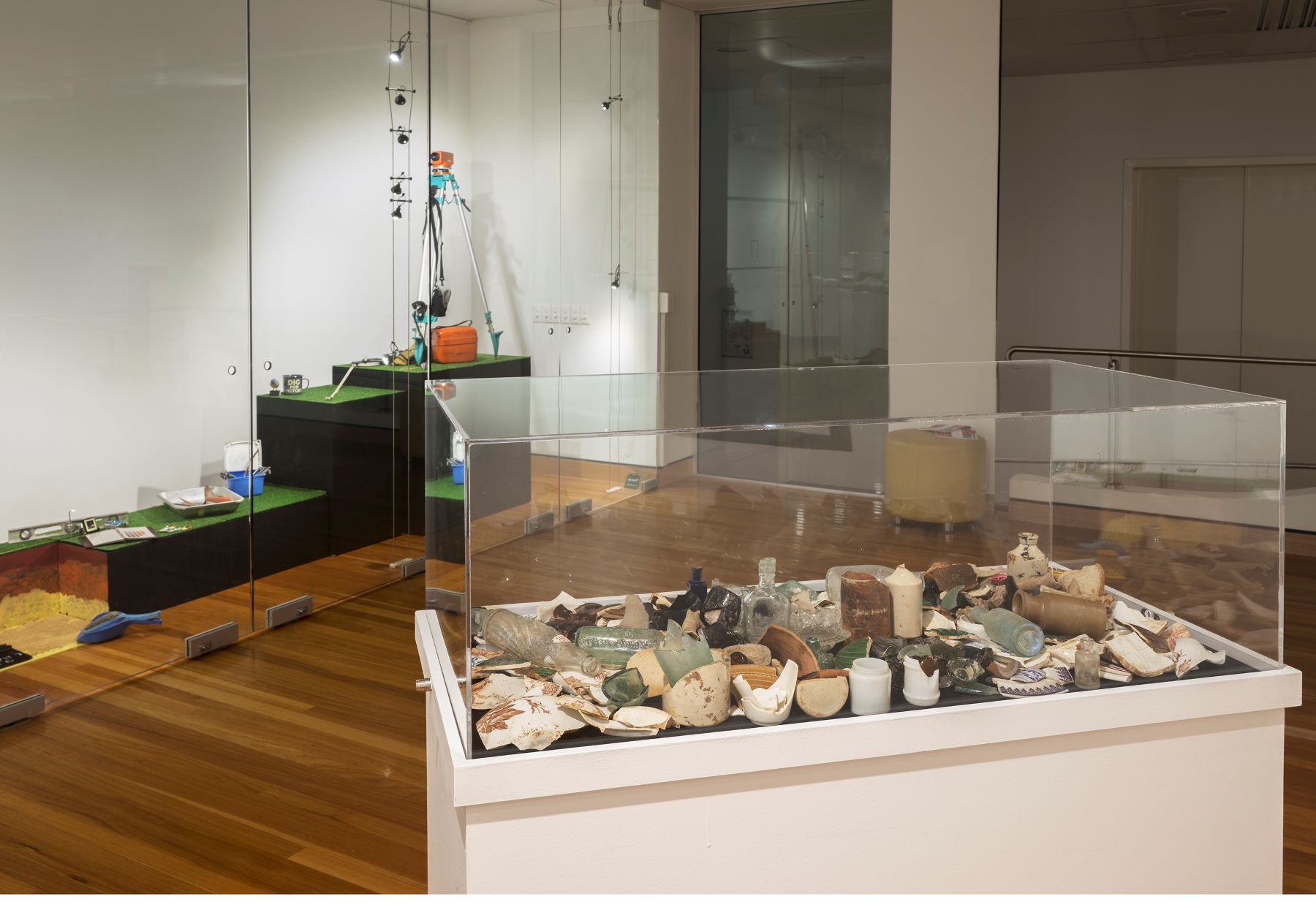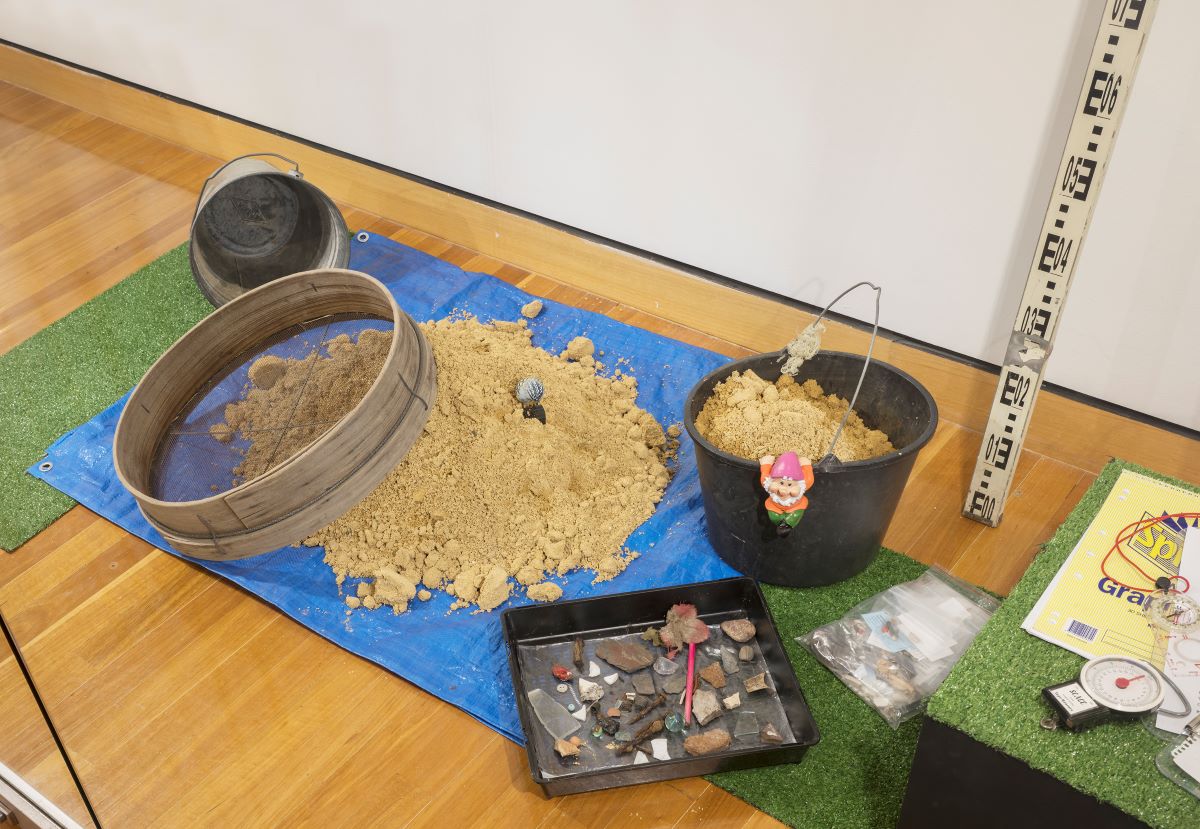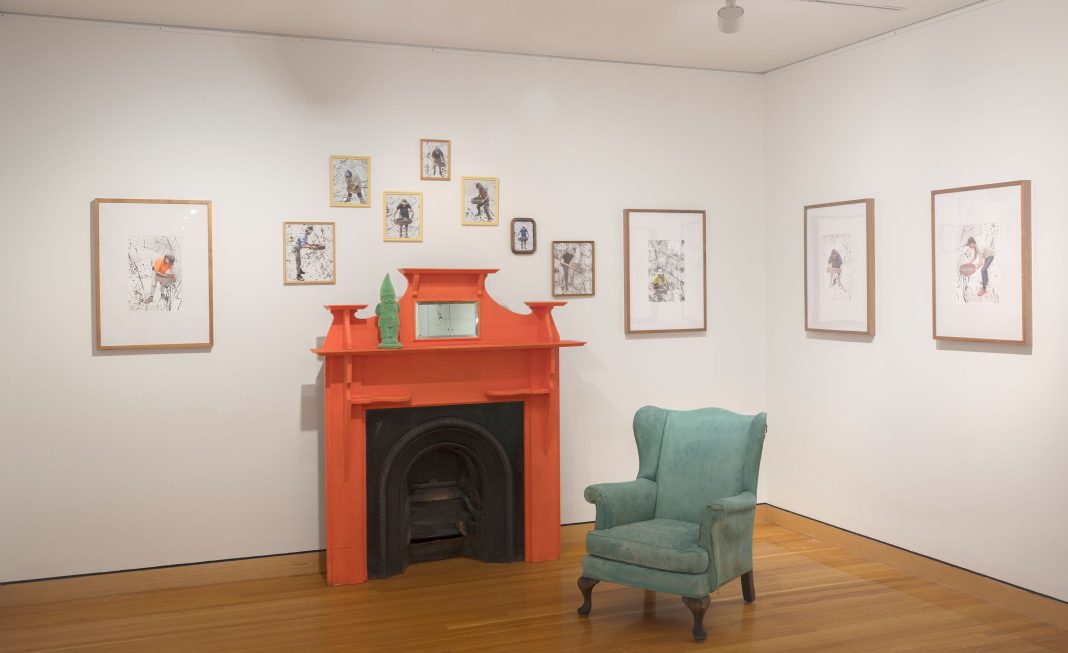In just one backyard, thousands of objects offer a glimpse into decades of the history and lives of those who once called the space home. A collection of these finds and stories can be seen in Backyard Archaeology at Canberra Museum and Gallery (CMAG) until 1 September.
The house in question was in the Sydney suburb of Arncliffe, and the archaeologist who excavated it is Dr Steve Brown, Senior Research Fellow at the University of Canberra. He lived in the home from 2007- 2015 and was inspired to conduct archaeology digs in his backyard after finding treasures while gardening.
“I was interested to know how much was there, so I undertook about five very small excavations in different parts of the property garden,” says Dr Brown.
The excavations and landscaping culminated in around 3,600 objects being found, from pieces of clay pots and ceramic plates to glass, toys, terracotta, chocolate wrappers and goodies spanning 120 years of history.

“In addition to those excavations, I had quite a few other objects that we found, both in the house while doing renovations, and from gardening. Some of those I categorised as special finds. In the exhibition, there’s about 10 of those special finds or groups of finds and the stories behind them.”
The fascination with what happened at the Arncliffe residence started before they had purchased it; Dr Brown came across several articles regarding a drive-by shooting in the street in 2006.
“When we moved into the house, it turned out that there was a bullet hole in the glass above the front door, so it was actually the house.”
They also discovered that two of the fireplaces in the home had been sealed, piquing his archaeologist instincts. Dr Brown decided the day they moved in that he would have to open them.
When he unsealed the fireplace in the bedroom, Dr Brown found “a jumble of ash [and] a collection of things which included medicine bottles, a horse-betting ticket, a glass doll eye”.
One of the items stuck out: a card written and left for Mrs L. Weidenhofer which only made the archaeologist more curious.
“Who was Mrs L. Weidenhofer, what was her story, and why was this collection of things in the fireplace? It took me a long time to work on that, but I did find out quite a bit,” smiles Dr Brown.
From the ground to the display cabinet
Dr Brown kept the lion’s share of items found and brought them with him when he moved to the region. CMAG’s previous director, Dr Anna Wong, suggested that he showcase some of his excavation finds in the Open Collections Gallery – a space for Canberrans to display, share and celebrate their personal collections.
“I wasn’t actually aware of what it was, and ended up finding out what a fantastic space it is, and what a fantastic opportunity it is for people with all sorts of collections to display them,” says Dr Brown.
Although all across Australia, our lands tell stories of people who have been living here for thousands of years, Dr Brown says the items we tend to dig up tell more recent tales. He says items will usually be from the past 270 years or so, since settler occupation, and tell of the good and the bad that has come since. The good is a story of human endeavour, the creation of cities, rural properties, and productivity. The bad is our relationship with First Nation people and new migrants.
“That story is buried in the backyard, and there are objects that you can uncover that help to tell that story and help to feel a more intimate and personal connection with the both fantastic and troubled past that Australia has.”

Dr Brown hopes the exhibition will inspire others who may be out in their gardens to consider the objects they might come across and the stories they might tell.
“Think about the kind of people that lived there in the past, the story of the past, and the story those objects can tell about the place they live in. I think that then creates a sense of place and a sense of belonging for people who live in those places.”
The found objects are complimented by a collection of photographic works by artist and archaeologist UK Frederick. Also a Senior Research Fellow at the University of Canberra, Dr Ursula Frederick’s series of people sifting reflects her work on the everyday life of archaeologists. The exhibition also ties in with a UC research report on everyday heritage.
“We’re looking about the ways in which people engage with everyday heritage,” says Dr Smith. “That can be through finding objects and creating stories about them, or typically it is the way people get involved with their family histories and genealogies.”
Dig up the past lives of people and place with Backyard Archaeology at Canberra Museum and Gallery until 1 September; cmag.com.au
Canberra Daily would love to hear from you about a story idea in the Canberra and surrounding region. Click here to submit a news tip.



